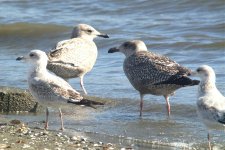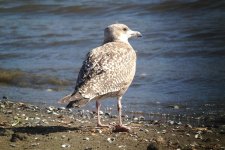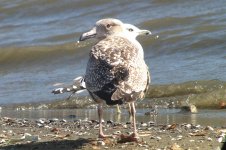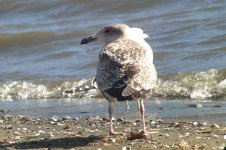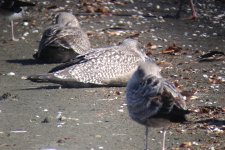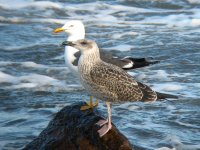DarkFireFalcon
Well-known member
Here's another bird I struggled with. No spread wing shots of this one, unfortunately. This was a beefier bird, appeared larger than the nearby California Gulls. My impression was of an American Herring Gull, but I'd like to confirm that. Specifically, I'm wondering how I'd be able to pick out a Lesser Black-backed Gull, which have begun showing up in my area in very small numbers in recent years. All 5 shots are of the same bird.
Thanks
Thanks




